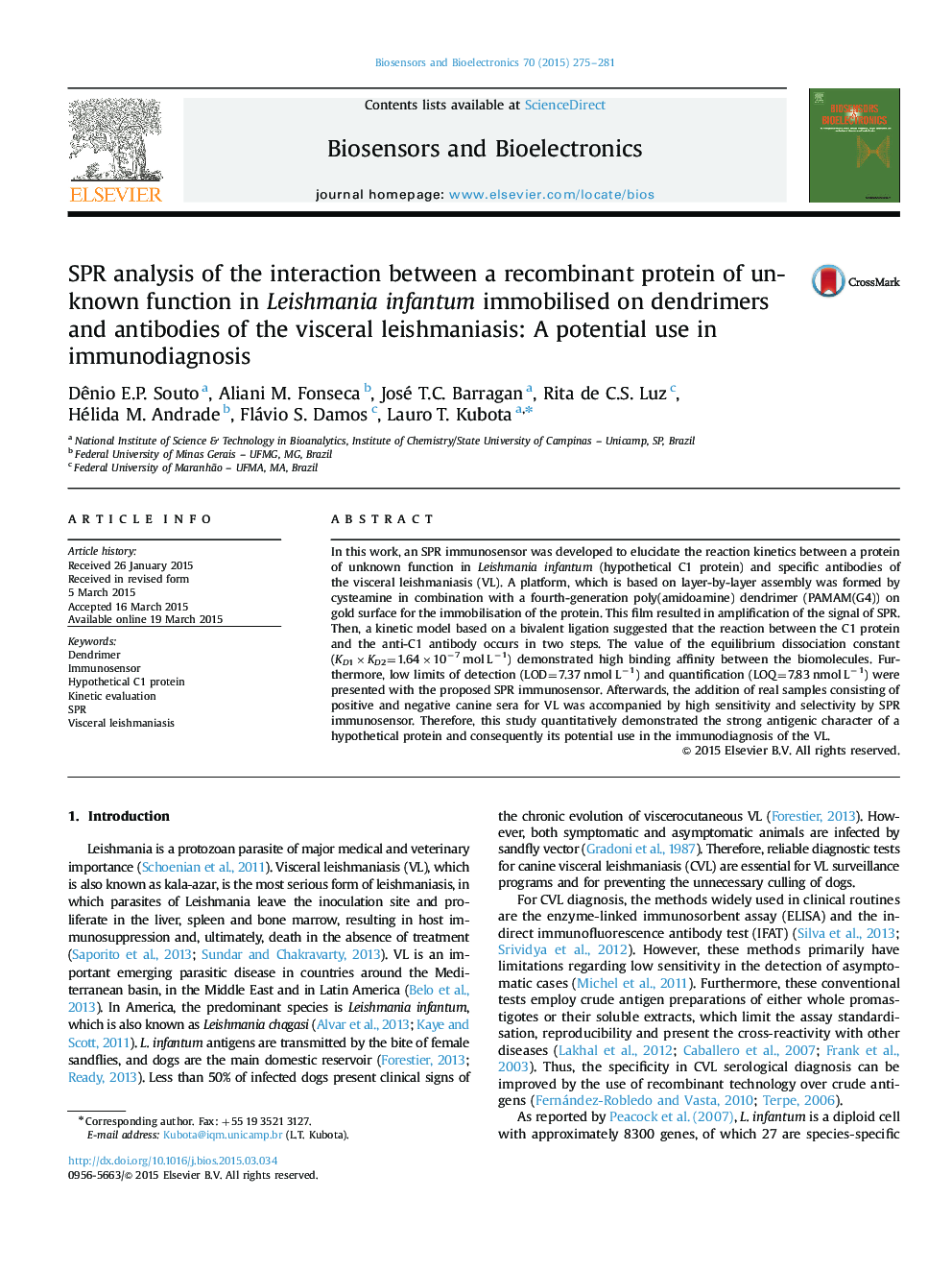| Article ID | Journal | Published Year | Pages | File Type |
|---|---|---|---|---|
| 7232034 | Biosensors and Bioelectronics | 2015 | 7 Pages |
Abstract
In this work, an SPR immunosensor was developed to elucidate the reaction kinetics between a protein of unknown function in Leishmania infantum (hypothetical C1 protein) and specific antibodies of the visceral leishmaniasis (VL). A platform, which is based on layer-by-layer assembly was formed by cysteamine in combination with a fourth-generation poly(amidoamine) dendrimer (PAMAM(G4)) on gold surface for the immobilisation of the protein. This film resulted in amplification of the signal of SPR. Then, a kinetic model based on a bivalent ligation suggested that the reaction between the C1 protein and the anti-C1 antibody occurs in two steps. The value of the equilibrium dissociation constant (KD1ÃKD2=1.64Ã10â7 mol Lâ1) demonstrated high binding affinity between the biomolecules. Furthermore, low limits of detection (LOD=7.37 nmol Lâ1) and quantification (LOQ=7.83 nmol Lâ1) were presented with the proposed SPR immunosensor. Afterwards, the addition of real samples consisting of positive and negative canine sera for VL was accompanied by high sensitivity and selectivity by SPR immunosensor. Therefore, this study quantitatively demonstrated the strong antigenic character of a hypothetical protein and consequently its potential use in the immunodiagnosis of the VL.
Related Topics
Physical Sciences and Engineering
Chemistry
Analytical Chemistry
Authors
Dênio E.P. Souto, Aliani M. Fonseca, José T.C. Barragan, Rita de C.S. Luz, Hélida M. Andrade, Flávio S. Damos, Lauro T. Kubota,
